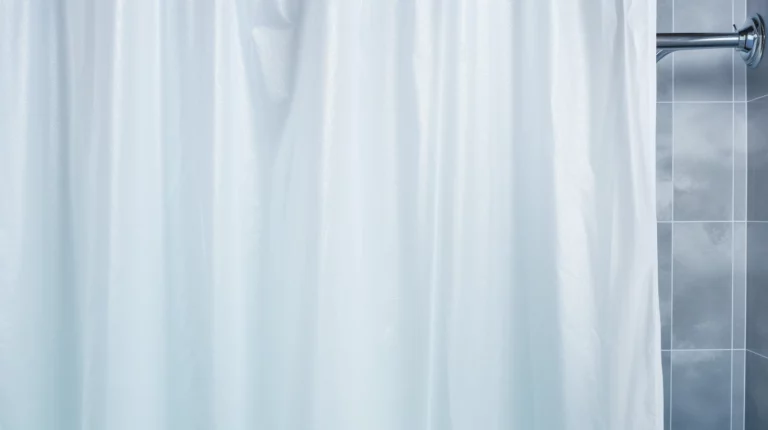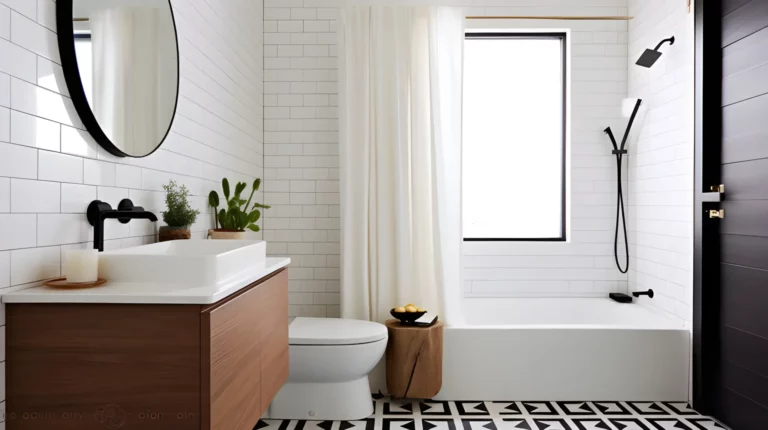How to Keep Shower Curtain Closed: 8 Proven Effective Methods
Did you know that nearly every homeowner experiences the annoyance of a shower curtain that won’t stay shut at least once? You’re not alone in this slippery struggle. And there’s good news—you can fix it with a few simple tricks.
This blog is here to help you learn how to keep shower curtain closed, ensuring a dry floor and a serene, draft-free shower. You’ll find out how to use weights, magnets, and other clever devices to secure your shower curtain. Plus, you’ll learn preventative measures to stop the problem before it starts.
Say hello to uninterrupted bliss and a bathroom that stays as tidy as you intended. Let’s get started on creating a more enjoyable and functional shower space for you.
Table of Contents
Key Takeaways for How to Keep Shower Curtains Closed
You’ll find that adding weights or magnets to your shower curtain can keep it closed and prevent water from escaping during showers.
Opt for heavy-duty shower curtain weights to anchor your curtain, ensuring it stays flush against the tub.
Magnetic shower clips also offer a reliable solution. Affix them to the wall or tile using strong, non-permanent tape. Then connect them to your curtain for a secure seal.
The magnets not only attract each other but also work against the air pressure changes caused by hot water, countering the effects of Bernoulli’s principle, which often leads to a billowing curtain.

Why Do Shower Curtains Keep Blowing In?
It’s a common annoyance that your shower curtain keeps billowing inward. So why do shower curtains keep blowing in?
Air Pressure and Vortex
Your shower’s air pressure and vortex are the culprits behind the curtain’s persistent inward billowing. When you turn on the water, the spray creates a dynamic airflow pattern in the enclosed space. According to Bernoulli’s principle, an increase in the velocity of airflow results in a decrease in pressure.
This pressure differential between the inside and outside of the shower area generates a horizontal vortex. That’s the swirling motion of air you may notice, which sucks the curtain toward the water stream. This effect can be quite frustrating. But understanding the mechanics can help you counteract it with the right techniques.
Bernoulli’s Principle
Despite your efforts, you might have noticed that your shower curtain still tends to blow inward, which Bernoulli’s principle explains. This scientific principle suggests that as the air flows faster over the outside of the curtain, it creates a low pressure in the vortex. So the higher pressure inside your shower pushes the curtain toward you.
Here’s why the shower curtain keeps blowing in:
- Bernoulli’s principle: Fast-moving air lowers pressure.
- Shower curtain blowing: Caused by pressure differences.
- Low pressure of the vortex: Happens outside the shower.
- Increase in velocity: Air moves faster, pressure drops.
- Air flows: Movement of air creates the effect.

Air Conditioning in the Bathroom
Your bathroom’s air conditioning is another key player in the pesky dance of your shower curtain.
When your bathroom’s air conditioning is on, it causes warm air to rise to the top. This movement of air creates a pressure difference in your bathroom.
The cooler air from the air vent moves to replace the rising warm air. This will generate a draft that can cause your shower curtain to billow inward.
To mitigate this, ensure that your air vent isn’t directly facing the shower area. Instead, adjust the air conditioning temperature to reduce the thermal effect.
Potential design flaws with the curtain or rod
Many shower curtains lack enough weight or structural design. These can cause them to blow inward toward you. This can be due to many design flaws:
- Weak magnets: Inadequate magnetic strength fails to secure the curtain to the side of the tub.
- Ineffective curtain weights: The absence or insufficiency of shower curtain weights at the bottom leads to instability.
- Flimsy curtain liner: A too-lightweight or thin shower curtain liner may not offer enough resistance to air flow.
- Suboptimal rod design: A straight rod, as opposed to a curved shower rod, can contribute to the curtain’s movement.
- Inadequate fastening: Using standard hooks without extra support, such as binder clips, may not prevent the curtain from gaping.
Before You Get Started

Before you tackle the issue, you’ve got all the necessary supplies on hand. You can consider acquiring curtain clips. They can secure the fabric to the liner, thus minimizing movement.
A sturdy suction cup may be useful for anchoring the curtain’s edges to the wall. If you prefer a more robust solution, a weighted curtain can offer enough heft to resist breezes and prevent unwanted motion. For a heavy shower curtain setup, these weights are particularly effective.
Lastly, upgrading to a curved shower curtain rod can keep your curtain flush against the tub’s edges and closed during use.
How to Keep Shower Curtain Closed: 8 Proven Methods
You’ve got 10 options when it comes to keeping your shower curtain closed.
1. Curved Shower Curtain Rods

A curved shower rod can reduce the likelihood of your shower curtain creeping open during use. By opting for a curved shower rod, you’ll gain several advantages that ensure your shower curtain stays closed:
- Extra Space: A curved rod provides more elbow room in the shower area.
- Stability: The arch of the curved shower rod prevents the curtain from slipping off.
- Aesthetic Appeal: It enhances the whole look of the bathroom by creating a smooth, bowed line.
- Water Containment: The curvature keeps the curtain away from the tub, minimizing water spillage.
- Versatile Installation: Curved rods fit standard tubs and can be adjusted to the height of your shower curtain for a perfect fit.
2. Binder Clips
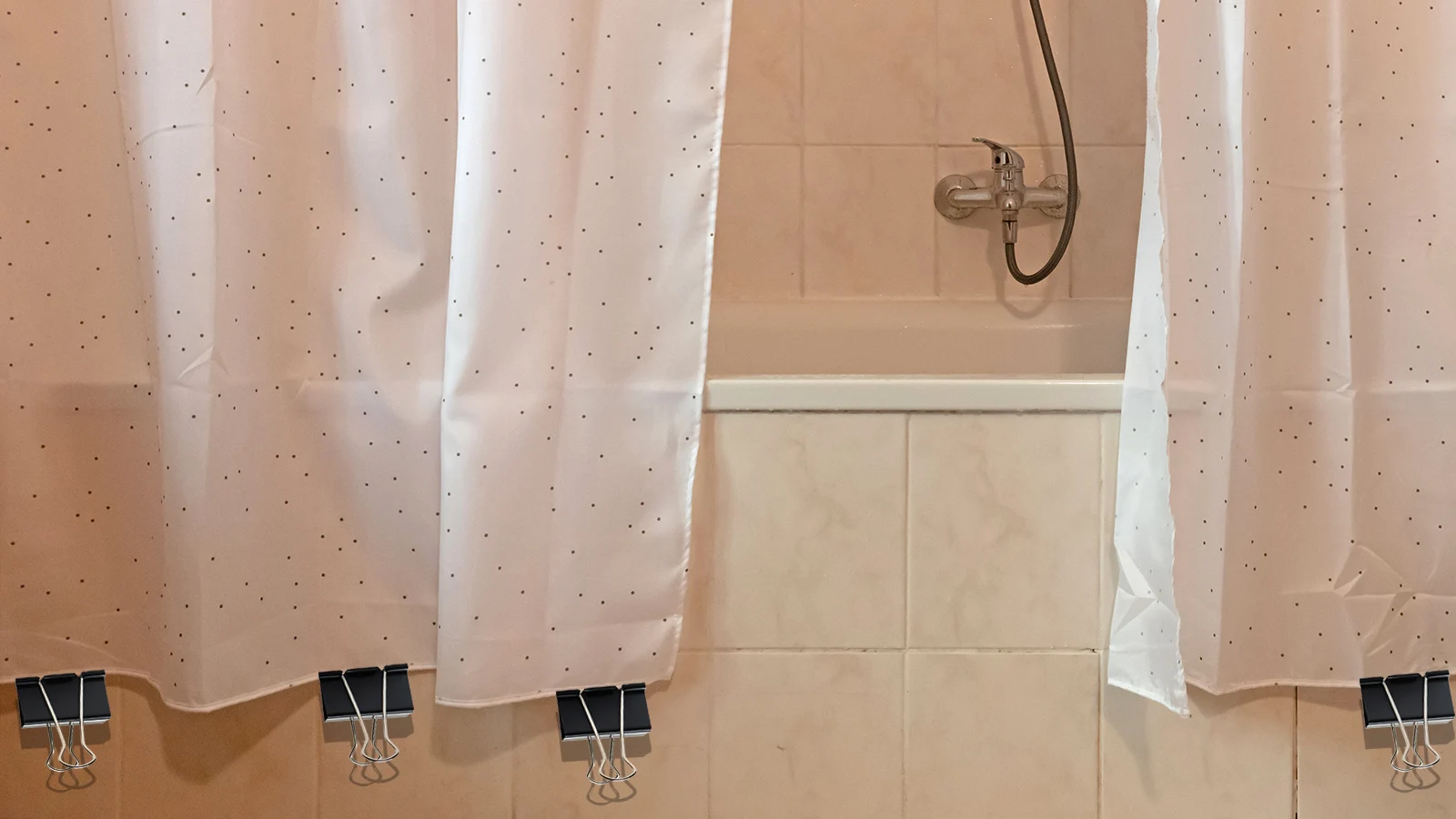
Attaching a few binder clips to the lower edge of your shower curtain can prevent it from billowing during showers. To install this easy fix, clip binder clips at regular intervals along the bottom of the curtain. This will add weight and help keep the curtain in place. This will also reduce the chances of water escaping onto the bathroom floor.
It’s important to use an enough number of clips to distribute the weight evenly. When selecting binder clips for this purpose, opt for a size and material that won’t rust or damage your curtain. Remember to remove the clips after your shower. Doing so can prevent rust stains and prolong the life of both the clips and your shower curtain.
3. Suction Cups

During your next shower, consider using suction cups to fasten the edges of your curtain. They ensure the curtain stays closed and prevent water from splashing out. Suction cups along the shower curtain are a simple yet effective method to keep the curtain in place.
Here’s how you can use this technique:
- Clean the area where you’ll attach the suction cups to ensure a strong grip.
- Press the suction cups against the shower wall, one near the top and another at the bottom of your shower curtain.
- Check the suction cups regularly to ensure they haven’t lost their seal.
- If necessary, moisten the cups slightly to rejuvenate their sticking power.
- Use clear suction cups for an unobtrusive look that blends with any shower curtain design.
This approach keeps your shower curtain inside the shower, maintaining privacy and dry floors.
4. Wet the Shower Curtains
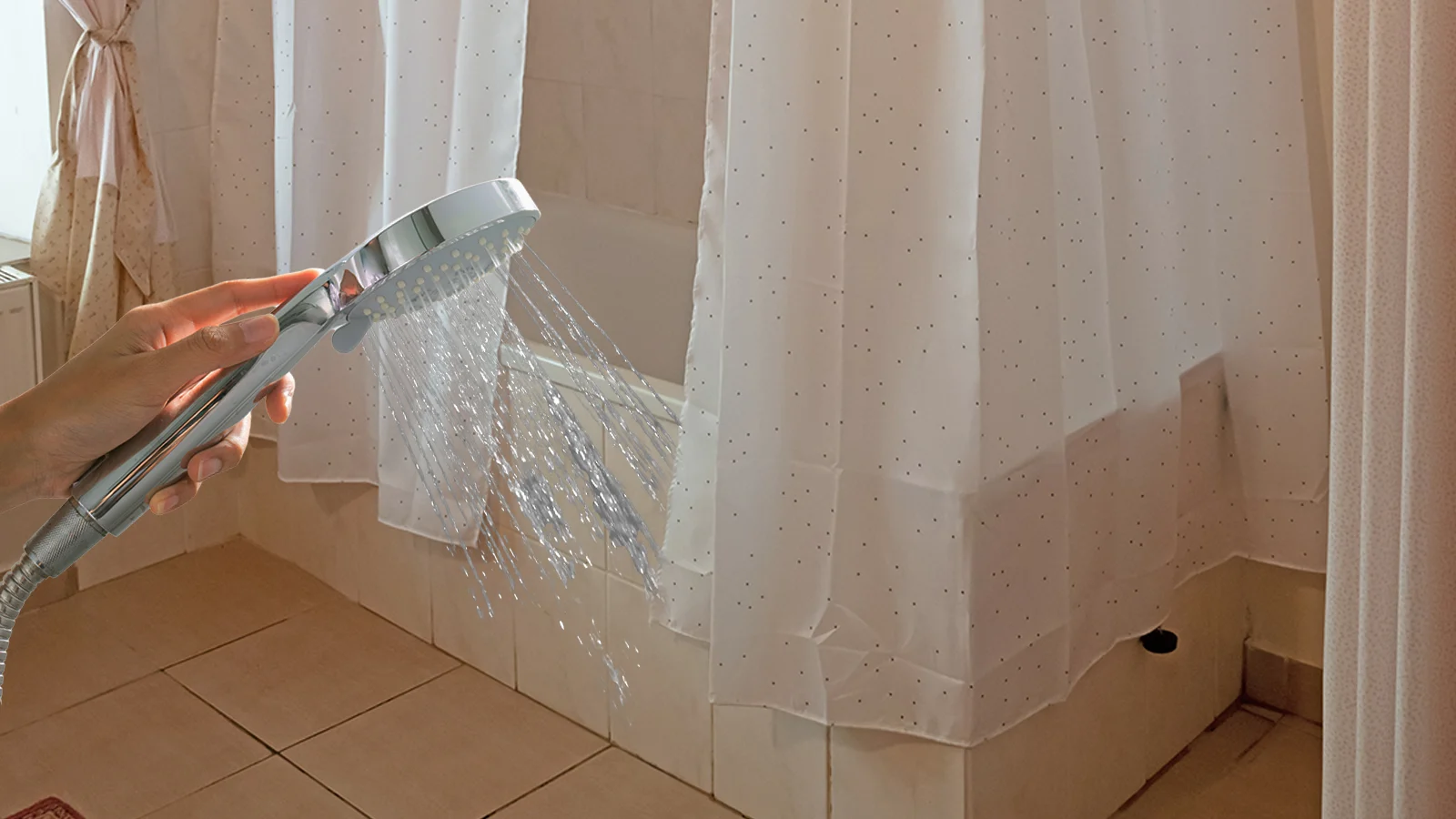
While you’re showering, wetting the bottom of the curtain can effectively keep it from billowing. This simple yet practical method involves using water to add weight to the curtain liner, making it cling to the tub.
Start by turning the shower head toward the side of the tub and spraying the bottom of the shower curtain. The goal is to wet the shower curtain just enough so that it sticks without soaking the bathroom floor. Or, you can fill a cup with water and pour it along the lower edge of the curtain for a more controlled approach.
5. Use a Heavy Shower Curtain
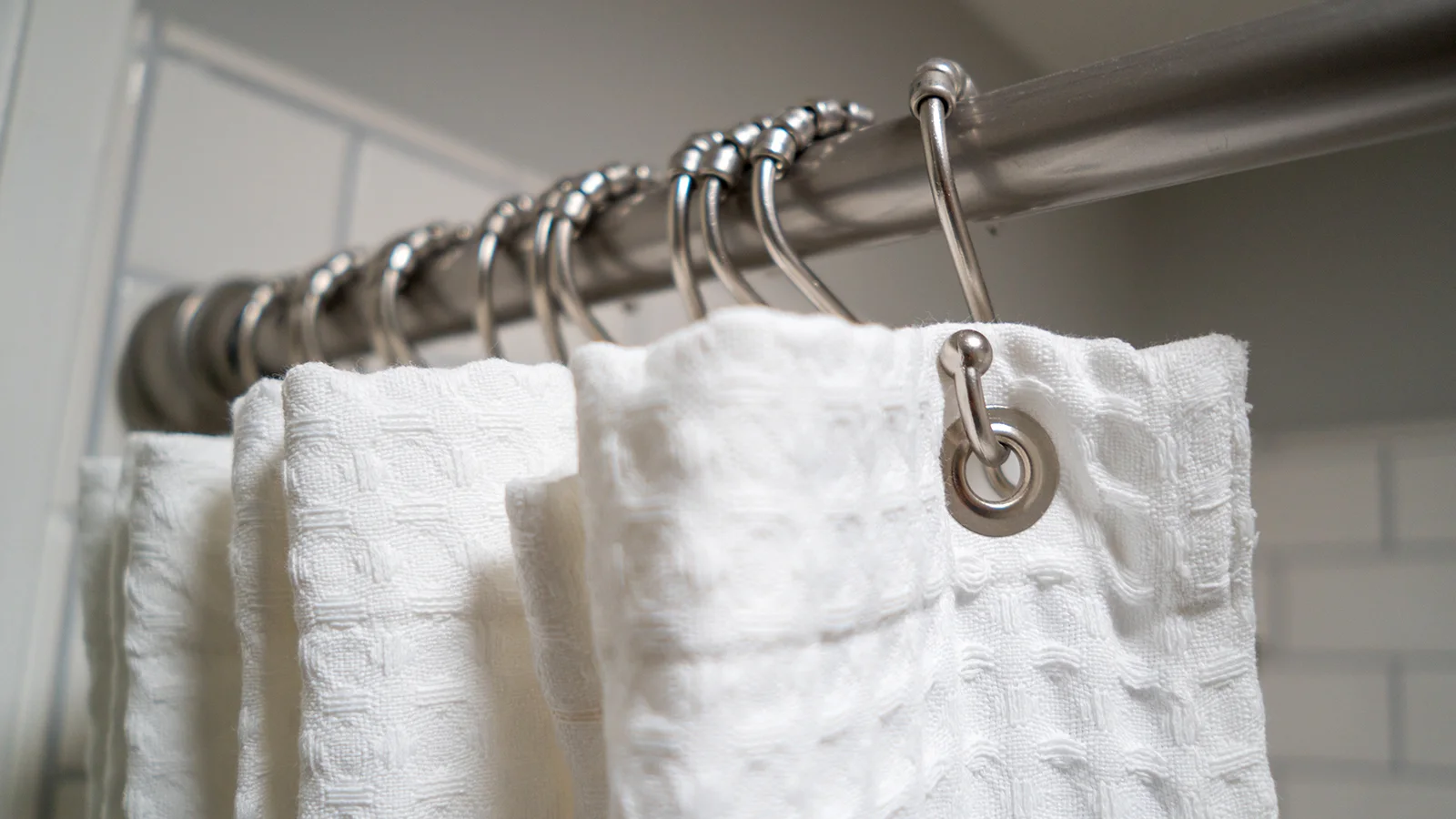
You can ensure your shower curtain stays closed by opting for a heavy-duty curtain. It can add significant weight to prevent billowing. This curtain should snugly fit your tub and have enough heft to stay in place. Here are some key features to look for:
- Heavy-Duty Material: Choose a curtain made from thick, durable fabric or vinyl.
- Strong Magnets: Ensure there are strong magnets embedded along the bottom edge.
- Weighted Hem: A hem with built-in weights adds stability.
- Curved Shower Rod Compatibility: A heavy curtain should work well with both straight and curved rods.
- Reinforced Grommets: These prevent tearing and maintain the curtain’s structure.
6. Magnetic Shower Curtains
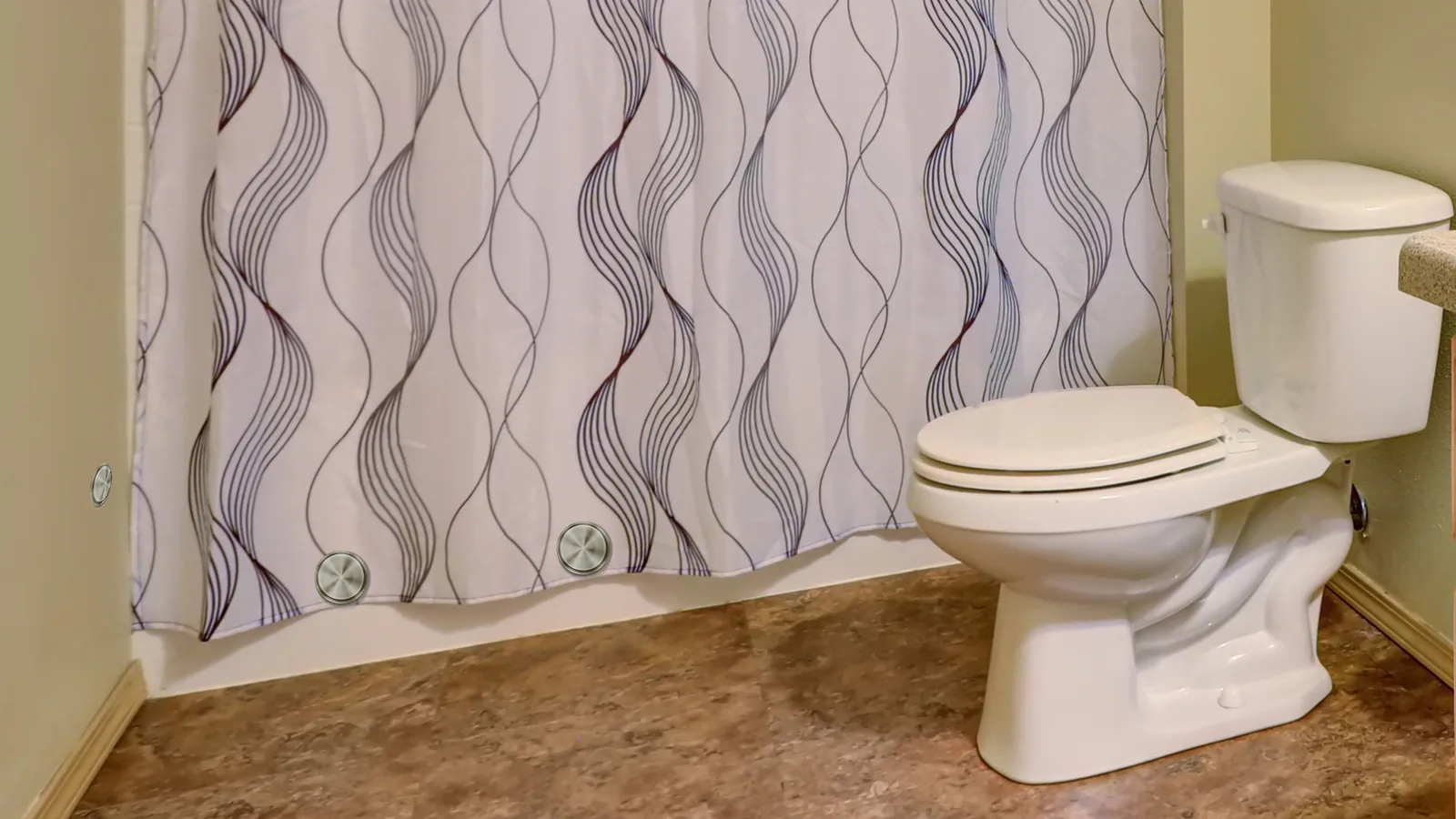
By harnessing the power of magnets, you can ensure your shower curtain stays shut and water remains inside the tub. Opt for a magnetic shower curtain equipped with powerful N52 magnets to keep your curtain away from you while you shower.
These magnets are strategically positioned along the edges of the curtain to snap onto the shower wall, securing the curtain in place.
When installing, attach the magnets to the lower corners of your curtain. Align their counterparts on the shower wall. This system not only keeps shower splashes at bay but also provides a neat, sealed look.
7. Use a Shower Liner

Implementing a reliable shower liner is one of the most effective methods. Opt for a heavy shower liner, preferably one that’s weighted at the bottom. This helps prevent the liner from billowing, keeping both the shower curtain and the water where they belong.
Additionally, when the water is warm and steam fills the bathroom, a shower liner can create a seal against the tub’s edge. This minimizes the chances of the shower curtain moving around. For even better results, you can wet the bottom part of the liner so it sticks to the tub, anchoring it effectively.
8. Adjust the Shower Wall and Tub
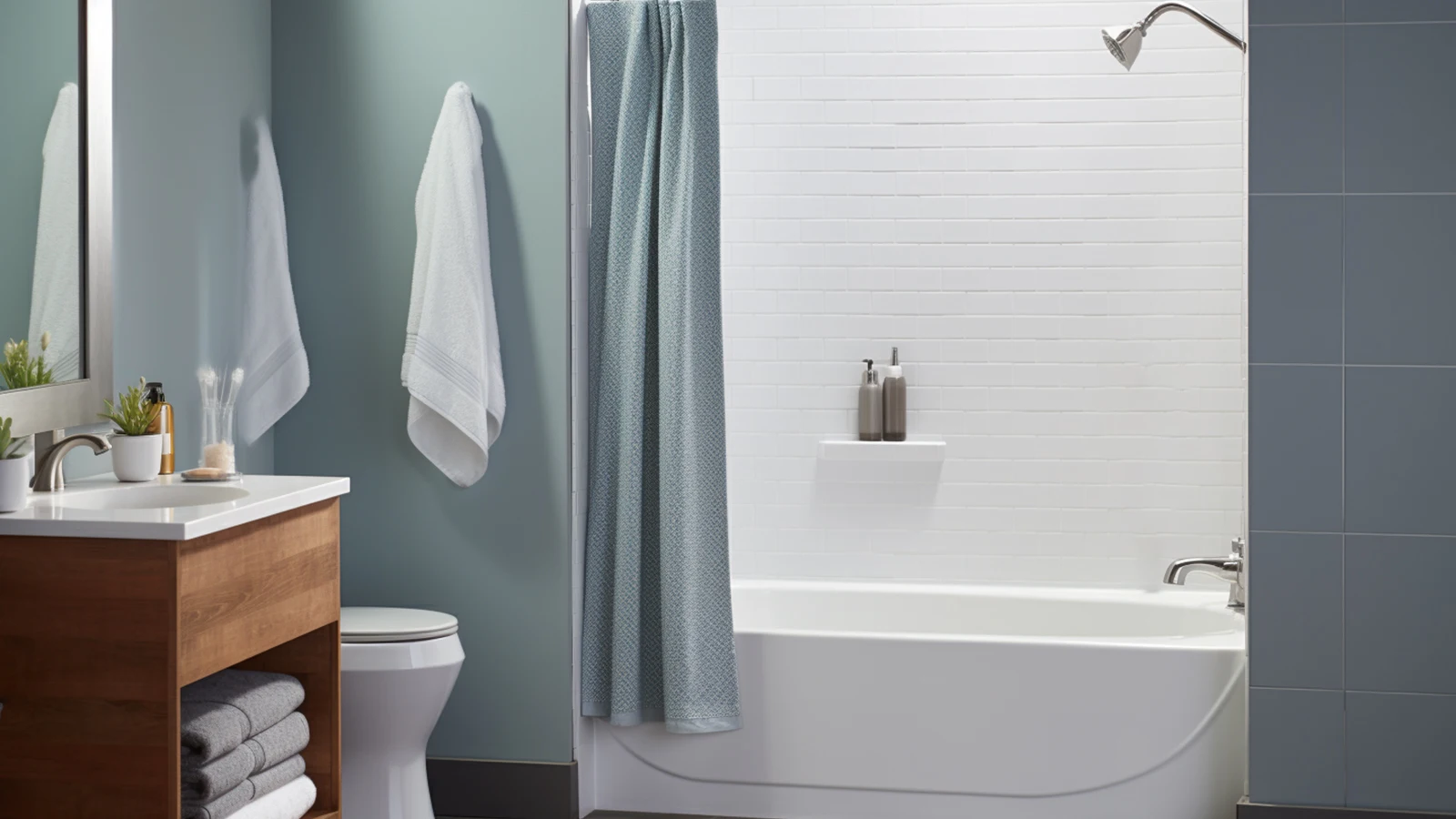
Optimization of your shower’s structure can enhance curtain stability, ensuring it remains closed during use. Start by adjusting the shower wall and tub interface. Attach command hooks to create a secure anchor point for your shower curtain. This optimizes positioning to resist shower spray and movement. Use this technique on both ends of the stall shower for even tension and to prevent gaps.
Push the last shower curtain hook against the shower wall for added support. If you have a magnetic tub, attach magnets to the curtain’s lower edge for a firm grip. Alternatively, a heavy shower liner can act as an effective barrier, keeping your curtain adhered to the shower tub and thwarting any inward billowing, further securing your shower curtain in place.
How to Prevent Your Shower Curtain from Getting Stuck
A sticky situation with your shower curtain is both annoying and preventable.
Ensure you’re regularly cleaning and maintaining the curtain to avoid buildup that causes sticking.
Consider upgrading to a curved rod. Secure curtain liners with clips to enhance functionality and keep your shower space sleek and obstruction-free.
Shower Curtain Cleaning and Maintenance
Ensure you regularly clean your shower curtain to prevent it from sticking and accumulating mildew. Cleaning and maintenance are key to keeping your bathroom fresh and your curtain functioning properly. Here’s what you need to do:
- Wash the curtain in warm water to tackle grime and soap scum.
- Use a gentle detergent suitable for the material of your shower curtain.
- Rinse thoroughly under running water to remove any soap residue.
- After showering, fully extend the curtain to dry out evenly and quickly.
- Ensure proper ventilation in the bathroom to aid in the drying process.
Upgrade to a Higher-Quality Curtain Rod

To prevent your shower curtain from getting stuck, consider upgrading to a higher-quality curtain rod that provides smoother gliding action. A well-designed rod enhances the functionality of your shower curtain, ensuring it draws closed with ease. If you’re grappling with a clingy curtain, a curved rod can offer more space and reduce friction.
Incorporate a magnetic shower curtain closure for an automatic seal against a magnetic tub. This feature discreetly draws the shower curtain tight, preventing billowing and gaps.
Use Shower Liners
Incorporating a shower curtain liner can help you avoid the frustration of a curtain that sticks or billows during your shower. The liner acts as a barrier. It keeps water contained and makes it harder for the shower curtain to cling to you.
For the best experience, pay attention to these details:
- Select curtain liners that are the right size for your shower.
- Ensure they’re heavy enough to prevent sticking to wet skin.
- Choose materials that resist mildew and soap scum buildup.
- Attach the liner to the bottom of the shower curtain to help keep it in place.
- Consider liners with magnets or suction cups for extra stickiness.
Place Shower Curtain Clips Properly
You’ll find that properly placing shower curtain clips can further prevent your shower curtain from blowing in.
For optimal curtain closure, align the clips at the same intervals as the holes on your shower curtain. Secure these clips to the wall or bathtub edge with a magnetic grip or adhesive for a sturdy hold.
Place the final clip near the wall, ensuring a tight seal to combat any drafts. This technique not only enhances privacy but also maintains the curtain’s position, eliminating any frustrating gaps.
Use Magnetized Shower Curtains Effectively
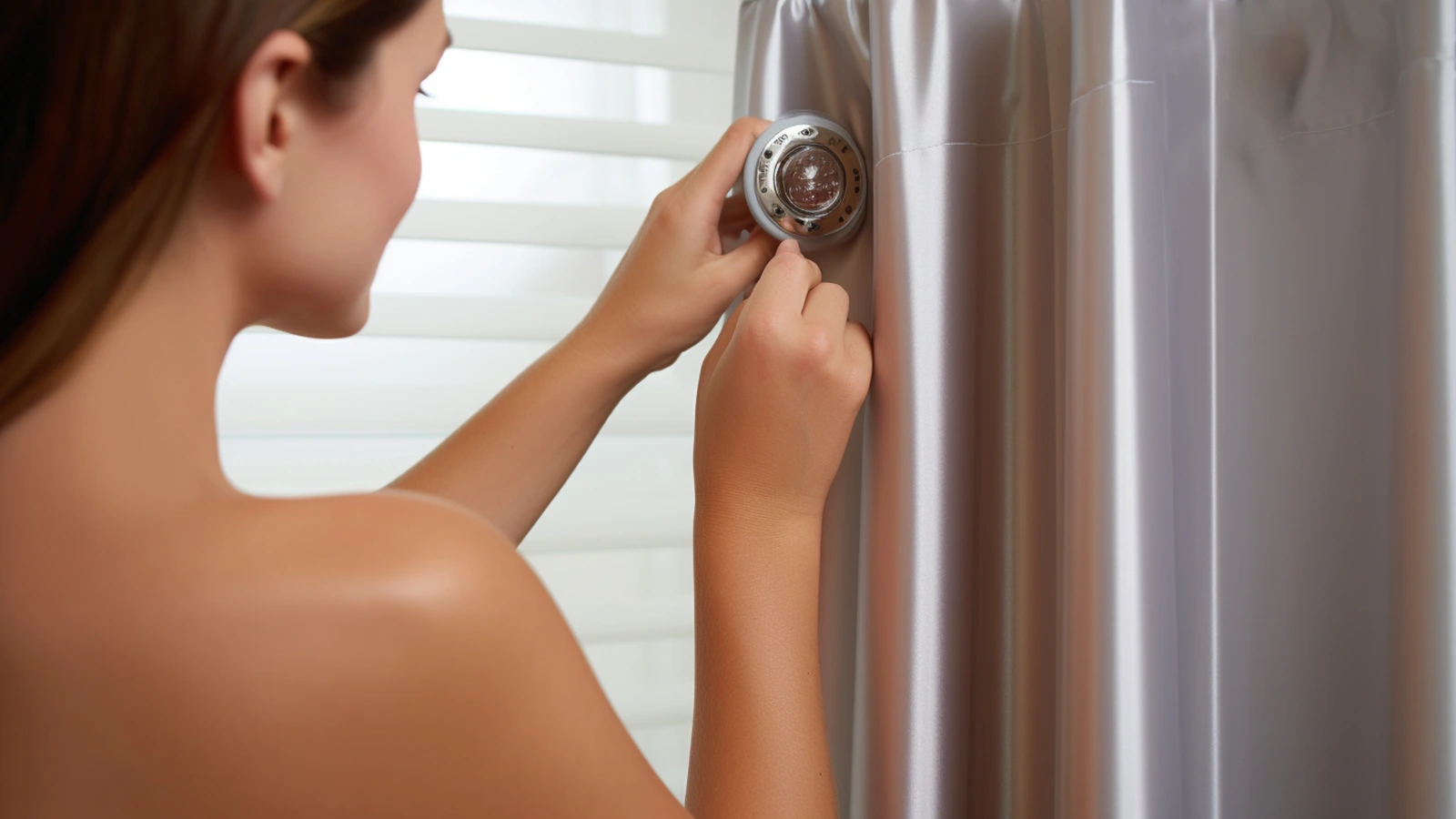
You’ll find that magnetized shower curtains offer a simple yet effective solution to keeping your curtain from sticking or blowing inward.
Consider these benefits:
- Strong Magnetic Grip: N52 magnets provide a robust hold.
- Simple Installation: Easily attach to existing curtains.
- Seamless Appearance: No gaps or unsightly bunching.
- Enhanced Stability: Prevents the curtain from flapping.
- Water Containment: Keeps water from escaping the shower area.
Conclusion
Now you’re equipped with the know-how to keep that shower curtain firmly in place. From clever weights to magnetic magic, you’ve got a range of solutions at your fingertips. Say farewell to annoying billows and unwelcome puddles.
Implement these trusty techniques, and you’ll relish an uninterrupted, serene shower every time. Embrace these tips and transform your bathroom experience into the oasis of calm and convenience it’s meant to be.
Happy showering!



